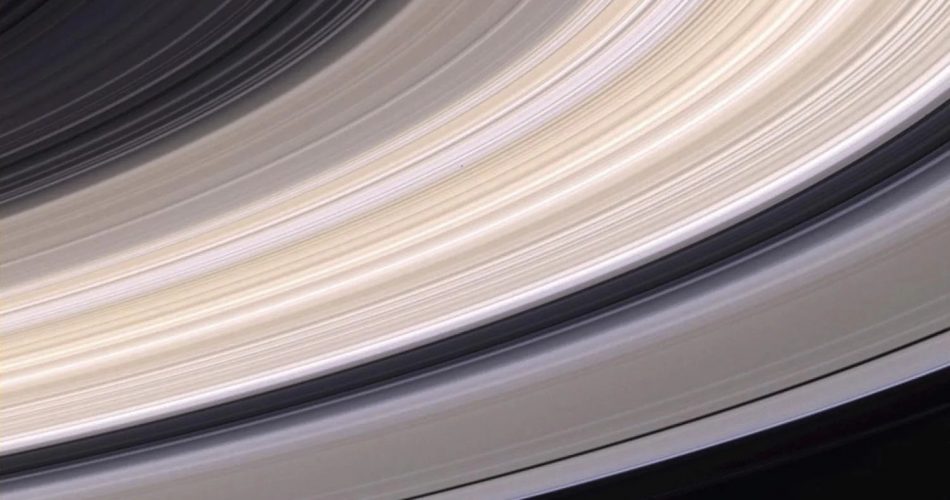A recent study published in Science Advances estimates that Saturn’s rings were formed less than 400 million years ago
We know that Saturn is about the same age as all the other planets in the Solar System, about 4.5 billion years… so it would be natural to conclude that its rings are the same age, right? But it seems not. A recent study published in Science Advances estimates that Saturn’s rings were formed less than 400 million years ago. In short, if we were to compare Saturn to a 45-year-old adult, the rings would be a child less than 4 years old!

Saturn’s rings are the brightest of the Solar System’s four ring systems, due to their almost pristine composition of water and ice (>95% by mass), and they are also the heaviest, with a total mass just under half that of the moon Mimas. Since the mass of the rings covers an area 10,000 to 100,000 times larger than that of a moon of the same mass, they are extremely vulnerable to bombardment by micrometeorites from outside the Saturnian system, which bring impurities and gradually darken the icy rings over time.
A question of dust
Tiny grains of rocky material flow almost constantly through the Solar System. In some cases, this flow can leave a thin layer of dust on planetary bodies, including the ice that makes up Saturn’s rings. Now imagine that we can enter two houses that have never been inhabited, and we want to determine which of them is the oldest. A preliminary estimate could be made in a fairly simple way: run a finger along the walls and observe the amount of dust deposited on them. The oldest house will probably be the dustiest. And indeed, a similar argument has been made for Saturn’s rings. Analysing the data from the Cosmic Dust Analyzer instrument on the Cassini probe, it has been found that the time required to accumulate the amount of dust now observed on the granules making up the rings (between 0.1% and 2% by volume) at the mass flux observed by Cassini (about one ten billionth of a milligram per square metre per second) is ‘only’ between 100 and 400 million years.
So we know the approximate age of the rings, but it is only one piece of a huge, unsolved puzzle. For example, we still don’t know exactly how the rings were formed. Our journey continues…
References:
Sascha Kempf et al. ,Micrometeoroid infall onto Saturn’s rings constrains their age to no more than a few hundred million years. Sci. Adv.9,eadf8537 (2023).

